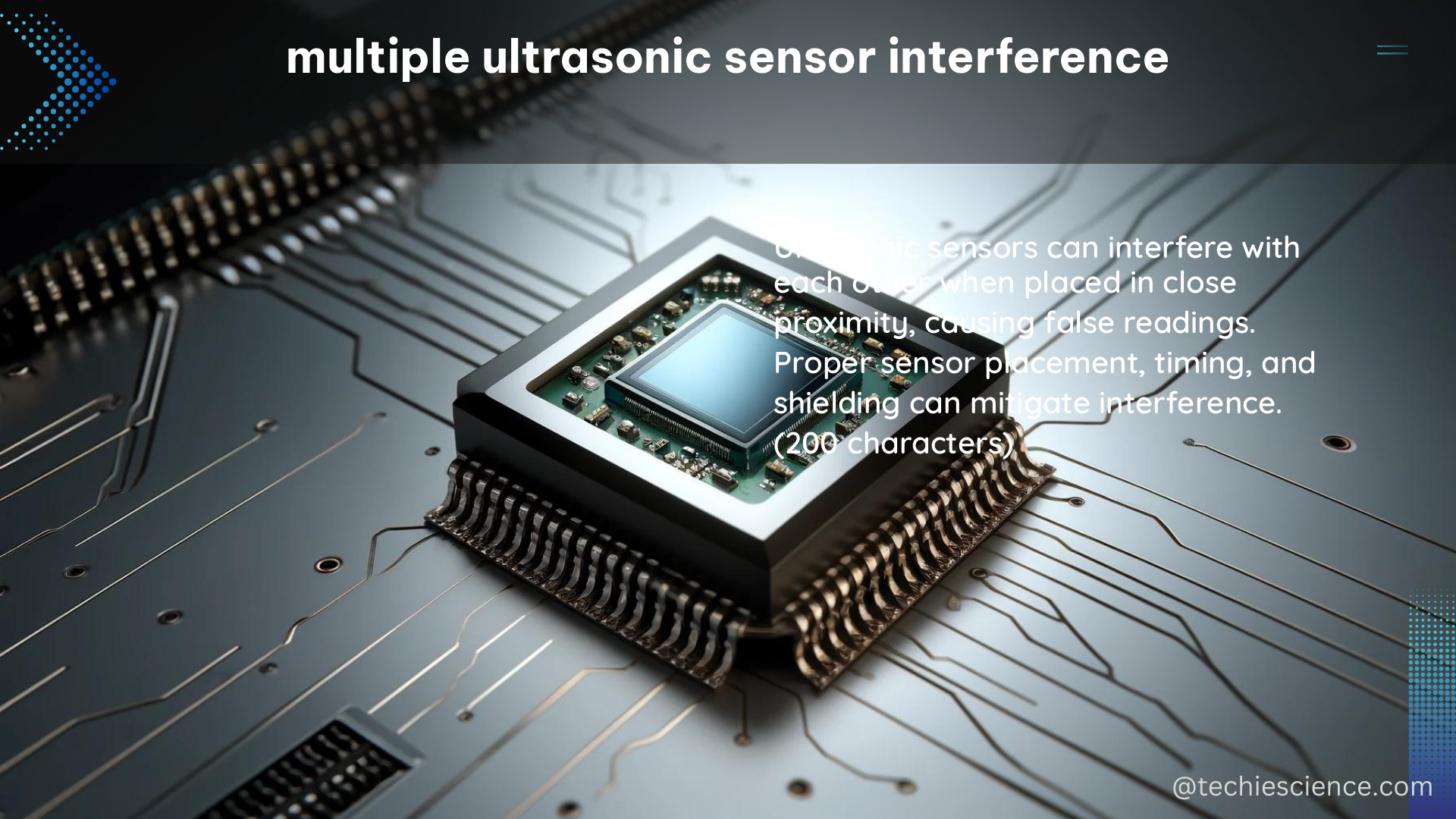Ultrasonic sensors are widely used in various applications, from robotics and automation to home security and parking systems. However, when multiple ultrasonic sensors are deployed in close proximity, they can experience interference, leading to inaccurate readings and unreliable performance. This comprehensive guide delves into the intricacies of multiple ultrasonic sensor interference, providing you with the necessary knowledge and strategies to overcome this challenge.
Understanding Ultrasonic Sensor Interference
Ultrasonic sensors work by emitting high-frequency sound waves and measuring the time it takes for the waves to bounce back after hitting an object. When two or more ultrasonic sensors are placed in close proximity, their sound waves can interfere with each other, causing erratic and inaccurate distance measurements.
The interference range, which is the distance at which the sensors start to interfere with each other, varies depending on the sensor model and the environment. For instance, the popular HC-SR04 ultrasonic sensor has an interference range of approximately 30 cm. This means that if two HC-SR04 sensors are placed within 30 cm of each other, their signals are likely to interfere, leading to unreliable readings.
Mitigating Interference: Sensor Placement and Orientation

One of the most effective ways to minimize interference between multiple ultrasonic sensors is through careful sensor placement and orientation. Here are some key strategies to consider:
Sensor Spacing
Ensure that the sensors are placed at least 30 cm apart, as recommended for the HC-SR04 sensor. This distance can vary depending on the sensor model, so it’s essential to consult the manufacturer’s specifications.
Sensor Alignment
Avoid placing the sensors in a direct line of sight with each other. Instead, position them at an angle or use physical barriers, such as cylindrical cones, to direct the sound waves and prevent interference.
Sensor Orientation
The orientation of the sensors can also impact their susceptibility to interference. Placing the sensors at a 90-degree angle to a wall or surface can improve accuracy and reduce the effects of multiple reflections.
Sensor Mounting
The way the sensors are mounted can also influence their performance. Secure the sensors firmly to prevent vibrations or movements that could affect the readings.
Mitigating Interference: Software Techniques
In addition to physical placement and orientation, software techniques can also be employed to mitigate the effects of multiple ultrasonic sensor interference. Here are some strategies to consider:
Interrupt-based Sensing
Instead of continuously polling the sensors, use interrupt-based sensing to trigger readings only when necessary. This can help reduce the frequency of sensor readings and minimize the chances of interference.
Sensor Synchronization
Synchronize the sensor readings to ensure that they are not taking measurements simultaneously. This can be achieved by introducing a small delay between each sensor’s reading or by using a master-slave configuration.
Sensor Filtering
Implement digital filtering techniques, such as moving average or Kalman filtering, to smooth out the sensor readings and reduce the impact of interference-induced noise.
Sensor Fusion
Combine the readings from multiple ultrasonic sensors with data from other sensors, such as infrared or laser rangefinders, to improve the overall accuracy and reliability of the system.
Advanced Techniques for Interference Mitigation
For more complex scenarios or applications that require higher levels of precision, you can explore advanced techniques for mitigating multiple ultrasonic sensor interference:
Frequency Modulation
Use frequency modulation techniques to differentiate the signals from each sensor, allowing them to operate at different frequencies and reducing the chances of interference.
Time-of-Flight Measurement
Employ time-of-flight (ToF) measurement techniques, which involve precisely measuring the time it takes for the sound waves to travel to the target and back. This approach can be more robust to interference compared to traditional pulse-echo methods.
Sensor Calibration
Regularly calibrate the ultrasonic sensors to account for environmental factors, such as temperature and humidity, which can affect the speed of sound and lead to inaccurate readings.
Sensor Redundancy
For critical applications, consider using redundant ultrasonic sensors to provide backup and improve the overall system reliability in the face of interference.
Conclusion
Multiple ultrasonic sensor interference is a common challenge faced by engineers and hobbyists working with these sensors. By understanding the underlying principles, implementing effective sensor placement and orientation strategies, and leveraging software techniques, you can overcome this challenge and ensure reliable and accurate performance in your projects.
Remember, the specific strategies and techniques discussed in this guide may need to be adapted based on the sensor models, environmental conditions, and the requirements of your application. Continuous experimentation, testing, and fine-tuning may be necessary to achieve the desired results.
References
- Multiple Ultrasonic Sensor with Raspberry Pi
- Managing 2 Ultrasonic Sensors without Blocking the Other
- HC-SR04 Ultrasonic Sensors Incorrect Readings when at an Angle
- Interfacing Multiple Ultrasonic Sensor with Arduino
- Ultrasonic Sensor Interference Mitigation Techniques
- Ultrasonic Sensor Synchronization and Interference Reduction

The lambdageeks.com Core SME Team is a group of experienced subject matter experts from diverse scientific and technical fields including Physics, Chemistry, Technology,Electronics & Electrical Engineering, Automotive, Mechanical Engineering. Our team collaborates to create high-quality, well-researched articles on a wide range of science and technology topics for the lambdageeks.com website.
All Our Senior SME are having more than 7 Years of experience in the respective fields . They are either Working Industry Professionals or assocaited With different Universities. Refer Our Authors Page to get to know About our Core SMEs.